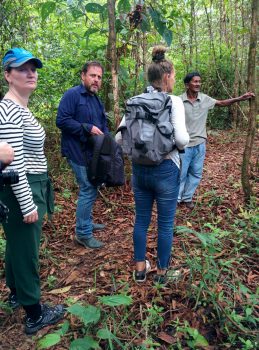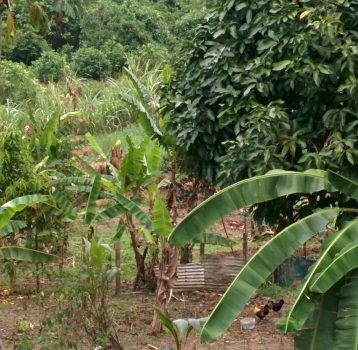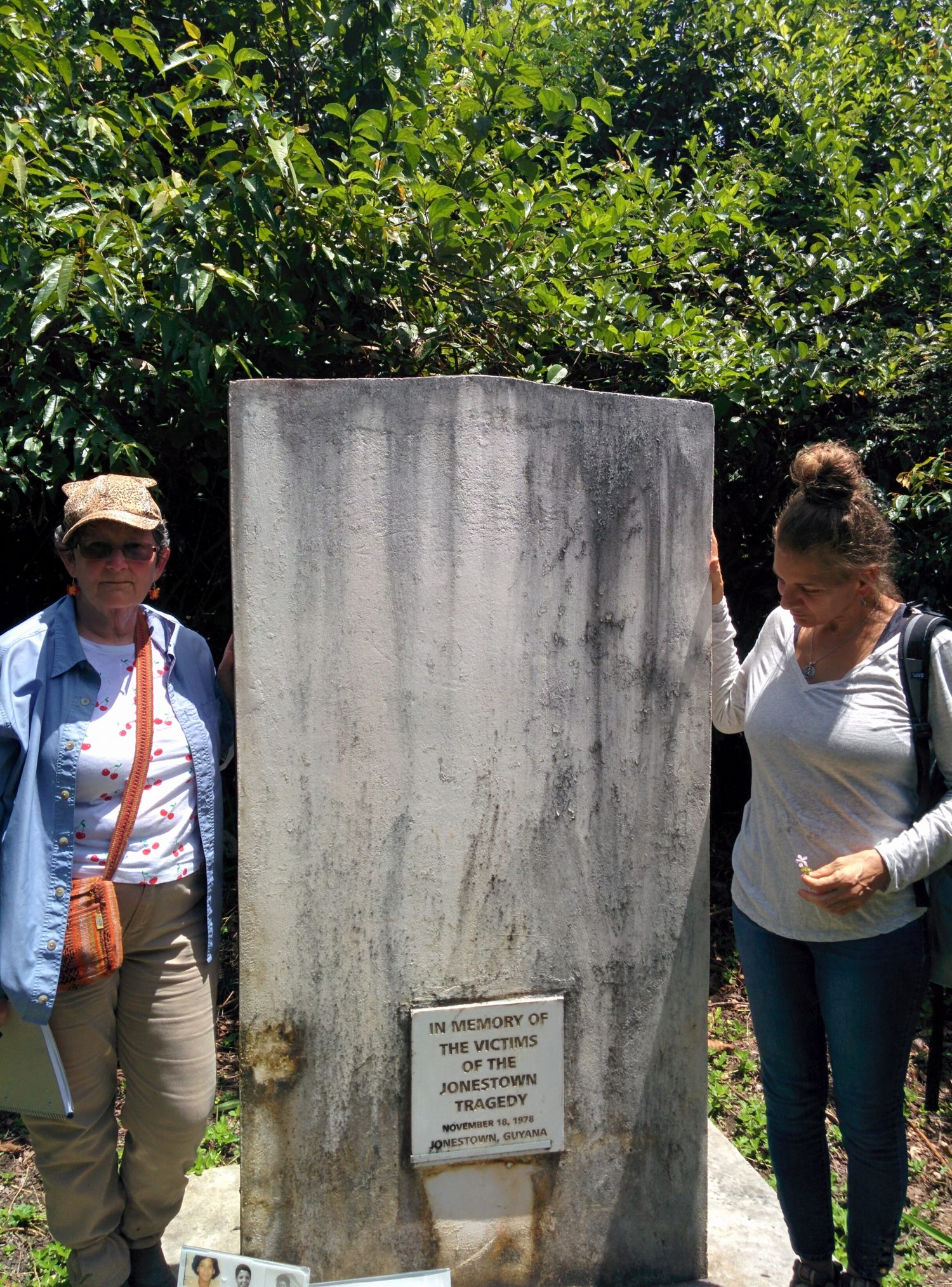The two survivors of the Jonestown tragedy who recently revisited the scene and relived memories of what they once called home,’ are looking to have renewed a personal friendship with Guyana.
Laura Johnston Kohl, 70, and Jordan Vilchez, 60 of the USA are planning to return in December, along with some other survivors to conduct a “free book giveaway” in the Port Kaituma community as well as to libraries.
This is in memory of the 40th anniversary of the Jonestown massacre that took place on November 18, 1977. A ceremony would also be held at the Evergreen Cemetery in Oakland, California where most of the victims were buried.

In a tragedy that shocked the world, preacher and leader of the Peoples Temple, James Warren ‘Jim’ Jones coerced over 900 members to drink cyanide-laced cool-aid and end their lives.
In March of 1977, Jones had asked Kohl if she would “come down to Guyana and help to get started for a big move. And in the summer of the same year, 400 people, including Jordan, came.
During their recent visit Kohl and Vilchez also donated about 15 books about the Peoples Temple, 12 of which were presented to the National Library.
The other three, written by Kohl’s close friend, Eusi Kwayana, were donated to the Walter Rodney National Archives.
She pointed out that one of Kwayana’s books is based on the Guyanese perspective of Jonestown. She had happily accepted his request to write the foreword for the book.
Vilchez, who has a passion for helping animals, is also establishing a clinic for the homeless dogs in Port Kaituma.
“The vision,” she said, “is to get them operated on so that they do not reproduce and create more homeless animals. Ideally they would also get treatment for other ailments.”
According to her, “Where I live this is an issue and headway is being made by the district and volunteer clinics.”
Adopted family
Apart from Vilchez losing her sisters and nephews at Jonestown, both women said it was devastating that they had lost their entire “adopted family.”
The women felt it was now time to have dialogue with the residents and to answer tough questions.
They had tried to put the tragedy behind and move on with their lives. But almost 40 years later they decided to make the trip after realizing that they were not the only survivors and that Guyana had also survived the horrors of Jonestown.
“It was not only my personal trauma, …thousands of Guyanese had been traumatized by the event,” Vilchez said. “I knew that heart-to-heart transparent conversations were and still are absolutely necessary.”
They traveled to the North West on March 5 and met with residents at the Port Kaituma Community Centre to “share information and feelings.”
The women also answered questions about what Jonestown was like and talked about “some of the rumours that had been circulating.”
Vilchez said it felt good to “hug people who were so kind and supportive. It was truly a homecoming.”
She recalled: “When the small plane landed in Port Kaituma, waves of emotions washed though me… It brought everything more vividly than ever into my awareness.”
Two elderly gentlemen who had been “instrumental in Jonestown’s early days of clearing bush and building structures,” guided them through the jungle.
Describing her feelings, she recalled that reality struck as she entered the place that she left so many years ago.
“The place where my sisters and nephews died. My heart raced! It was all so familiar, especially the lovely faces of the people there, …the smell of the bush,” she said.
At the back of her mind, she could hear the tune of the Guyana national anthem, which she had learned, along with Guyanese history. Although she was a US citizen, she had considered herself a Guyanese.
Her mother joined her at the Peoples Temple in California, USA at the age of 12 and at age 19, she was sent to Guyana along with others on a one-day notice.
Coming back, she felt good knowing that it was through her own volition rather than being sent by an organization.
“Although surviving had afforded me new-found freedom from the oppressive atmosphere of Jonestown, I had to begin life again with all of the accompanying feelings of shame and despair,” Vilchez said.
She said that her decision to return to Guyana felt “personally powerful and good for my well-being. It was another way of stepping into my past with full ownership and freedom.”
Different emotions
Kohl, a middle-school teacher/ civil rights activist, who published a book in 2010 entitled: Jonestown Survivor: An Insider’s look said, “When I got to Jonestown I had so many different emotions.”

“I was delighted that I had lived there, and that miraculously, the jungle seemed to forgive us our abuse and destruction. It had grown back densely and fought our re-entry.”
She said too that from the last “cleared” road leading into Jonestown, they had to walk on paths that were heavily overgrown, slippery and covered with “vines trying to trip us…”
The walk through the jungle was not without obstruction, as “the tiniest ticks you ever saw seemed to drop from above and spot our clothes, heading for our skin.”
Kohl said too: “There were black hornets’ nests and beehives which amazed us with their structures, and scared us at the same time.”
After walking for about a quarter of a mile they found their “first recognizable location – the Jonestown headstone…,” where she reconnected with the part of her heart that will always reside there.
At the headstone too, she also took the opportunity to tell the victims that “I loved them and can’t and don’t want to forget them. They are an important part of my life even though I cannot do anything to bring them back. I cannot do anything to give them back to the families and loved ones who suffered that great loss.”
According to her, “It was an insurmountable loss, but one that we survivors and family members had to endure. Life does go on regardless of losses like this.”
Kohl thought Jonestown and Guyana would be her “forever home” when she arrived. She was energetic and positive and loved nearly every experience in the Peoples Temple. “Those things I did not love seemed to be fixable over time. I didn’t know I did not know that I was heading into a catastrophe, into a community that would ultimately die. I didn’t know that Jim’s insanity would progress to the point of no return,” she lamented.
The experience she had at Jonestown has made her into a changed person and as she stayed at the tombstone, “I realized that I had left my old me there. From November 18, 1978… I took a 90-degree different course.”
Kohl added: “I would never again be a follower. I would never again laugh as if I lived in a glorious egalitarian and free world. I lost my naivete and my comfort. I had been grossly fooled.”
A resident who was part of the setting up of Jonestown, guiding Laura Johnston Kohl and Jordan Vilchez through the jungle.










